









Honey is a processed food that’s processed by bees rather than by people. Foraging bees begin by drinking nectar, a dilute sugar-water solution in flowers, mixing the nectar with enzymes in their stomach-like honey sacs. These bees pass the digested material to hive-dwelling house bees who reduce the moisture content by ingesting and regurgitating the mixture. They in turn deposit concentrated drops into honeycomb cells. After this, bees fan the fluid with their wings over the next few days to further concentrate it, finally capping the cells with wax.
What do we mean by “Processed Food”? Processing food means something has be done to alter its form before you eat it. Processing includes chopping, salting, seasoning, mashing, grinding, shelling, pressing, mixing, peeling, pasteurizing, fermenting, filleting, baking, butchering, and cooking.
Some processing is chemically done. Which can be natural or unnatural. Fermenting is natural, extracting oil from seeds and corn with chemicals not found in nature is unnatural. If you need to bleach and deodorize it, like margarine, we’d suggest that’s processing gone overboard. On the other hand, some quite natural chemical processing is done after you swallow your food and before it actually enters your system. In other words, digestion. Honey is a processed food, flavored sugar water partially digested by bees.
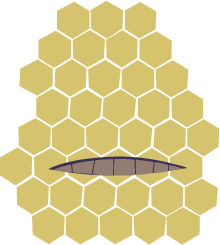
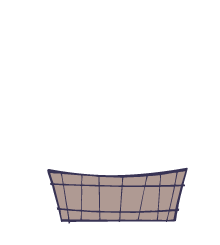


What is honey? Honey is made of roughly 80% sugar, 17% water, and a mixture of trace compounds providing flavor, color and preservatives. By far the most abundant sugars in honey are two simple sugars, fructose and glucose. Among the minor complex sugars in honey are maltose, sucrose, and other disaccharides, as well as trisaccharides such as erlose.
What’s the other 3% of honey? Mostly, acids, enzymes and protein. One bee enzyme, invertase, splits the sucrose in the nectar into fructose and glucose and also produces some erlose. Another enzyme, glucose oxidase, converts glucose to gluconolactone, which is hydrolyzed into gluconic acid, the main acid in honey. Formic, acetic, butyric, and lactic acids are also found in honey, rendering a pH value around 3.8 to 4.0 and is one reason why honey lasts a long time without spoiling.
There’s also flavoring and coloring agents. Many of the more than 100 such ingredients found in honey are volatile organic compounds, such as phenylethyl alcohol, that contribute to flavor. These many-varied substances are found in scant amounts; they make honey tasty and pretty, but not much else. Honey contains up to 1% nitrogen, which comes principally from proteins. About 0.2% of honey is ash containing various minerals.
Enzymes, bee or human, are digestive agents produced by the body in the digestive track that help break food down into the simpler substances which pass into our systems as fuel we actually use. Since people have their own enzymes to digest sugars, we don’t suppose those added by bees does much, either good or bad.
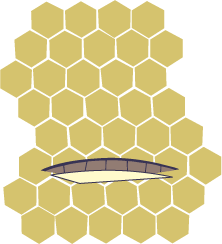


What is sugar? When people speak of sugar they usually mean the simple carbohydrate sucrose created in green plants through photosynthesis. Sucrose is in all fruits and vegetables, including their seeds, flowers and roots. Table sugar extracted from sugar beets or sugar cane is pure sucrose. Sucrose is two simple sugars bonded together: glucose and fructose in a 50-50 mixture.
What is high fructose corn syrup? (HFCS) In the 70s, fructose was considered fruit sugar, which is why when the process of getting sugar from corn was developed they dubbed it “high fructose corn syrup” so folks would think, “Fruit sugar, good.” Corn syrup mainly comes in two fructose/glucose mixtures. HFCS is 55%/45% and regular corn syrup is 45%/55%, though it can vary. Unlike sucrose, the sugars in honey and HFCS are free, that is they are not bonded together.
What about other types of sugar? Actually, all carbohydrates are a form of sugar. Simple carbohydrates are disaccharides such as sucrose, table sugar. Other simple carbohydrates are lactose in dairy products and maltose from malt. Complex carbohydrates (polysaccharides) are the starches from plants. All carbohydrates are broken down to the simple sugars glucose and fructose after we eat them. Most are converted in the small intestine with digestive enzymes to glucose, the primary fuel used by every cell in our body. Fructose is converted to glucose in the liver.
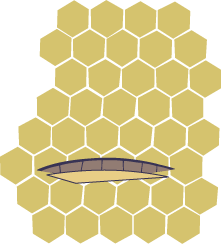
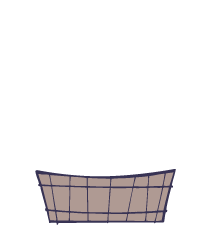


What’s it all mean? 97% of honey is practically the same thing as corn syrup, water and a mixture of fructose and glucose. (In fact, dishonest honey dealers cut honey with corn syrup because it is indistinguishable from the real deal.) Yet honey is thought to be healthy and corn syrup is considered poison. Maybe one or both of these claims might be a bit of hyperbole.
Glucose and fructose are chemically different, are metabolized differently, and have different effects on the body. Carbs are digested into varying amounts of those two simple sugars, but generally have more glucose than fructose. Fruits are higher in fructose, as befits their reputation. Table sugar is a 50-50 mixture. HFCS has the most fructose. How much and in what proportions of any of these should we eat? We couldn’t say, but perhaps there really can be too much of a good thing. As toxicologists say, “The poison is in the dose.”
The bottom bottom line? Honey is yummy sugar water bees subsist on. It’s the elixir of life for our apiary friends. For people it’s a side dish. And makes a great glaze on ham. Now that’s what we call yummy.
© Terry Colon, 2008